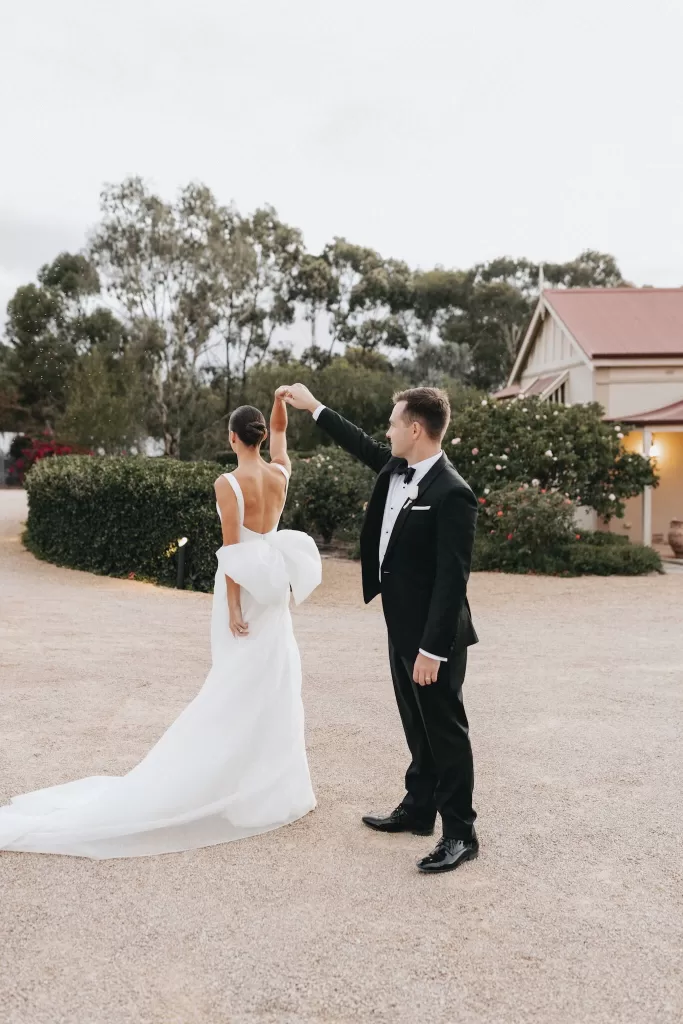Weddings in Australia

Get Married in Australia
Peak Season
Shoulder Season
Major Airports
Popular Vibes
Australia attracts couples seeking an adventure in possibly a place they’ve never been. The culture surrounding weddings tends to be relaxed, echoing the broader laid back lifestyle of the country, but can also be tailored into highly polished, luxury‑focused events. Each region has its own identity and climate, shaping the vibe of the celebration; from golden beaches to cooler alpine settings. Destination weddings in Australia are often planned for several days, with the happy couple often extending their visit to blend into an Australian honeymoon or moving on to south east Asia. Many travelling guests also opt to extend their stay, incorporating reef diving, wine tours, coastal drives, or outback exploration, giving a chance to enjoy a holiday as well. Though, given the distances between regions, careful planning of transport is essential.
Venues
Best Wedding Venues in Australia: Vineyards, Beaches & Country Estates
Australia’s wedding venues reflect its geography and regional character:
- Sydney & New South Wales: Harbour‑view hotels, coastal cliffs, luxury estates, and vineyards in the Hunter Valley. Sydney is iconic but often expensive, while regional NSW provides more relaxed and affordable alternatives.
- Victoria: The city of Melbourne offers modern hotels and rooftop venues, along with access to Yarra Valley vineyards and the Great Ocean Road. Regional areas such as Daylesford are known for spa retreats and boutique countryside venues.
- Queensland: Famous for tropical islands, the Whitsundays, and the Great Barrier Reef. Popular for beach ceremonies, resort weddings, and island exclusives, though couples should factor in cyclone season (typically November to April) and peak tourism.
- Western Australia: Perth provides urban venues, while Margaret River is celebrated for wineries, beaches, and rugged coastline. Distances are significant, but the sense of exclusivity and isolation appeals to many couples.
- South Australia: The Barossa Valley and Adelaide Hills are recognised for vineyard weddings that combine rustic charm with elegance.
- Tasmania: Known for wilderness lodges, historic estates, and cooler climates. Increasingly popular among couples who value nature and privacy.
- Northern Territory: Outback settings around Uluru and Katherine Gorge provide adventurous backdrops. Heat and remoteness are key considerations, but the cultural significance of these landscapes is unique.
Culture & Cuisine
Wedding Traditions & Cuisine in Australia
Australian weddings mirror the country’s multicultural heritage and population. Many follow Western traditions with ceremonies in churches, estate gardens, or beaches, followed by receptions with multi‑course meals, speeches, and dancing. Others reflect cultural influences, from Asian or Indigenous traditions.
Food is typically fresh and seasonal, with menus often featuring seafood, lamb, beef, and vegetarian dishes. Caterers are very experienced in accommodating dietary needs (gluten-free, vegan, halal, kosher), reflecting both the multicultural population and the health-focused Australian mindset. Many couples don’t consider their visit to Australia complete without the feature of an Aussie barbecue somewhere along the line.
Australia is also world-renowned for its wine, with popular pairings from Barossa Valley Shiraz, Margaret River Cabernet, and Yarra Valley Chardonnay.
The depth and breadth of the domestic wedding market ensures a wide choice of suppliers and services to suit all tastes and budgets.
Weather
Australia Wedding Weather: Best Months & Climate Guide
Australia’s size means it has a wide range of climates, so timing and location of the wedding matters.
- Southern Regions (Sydney, Melbourne, Adelaide, Perth): Best between September and April. Summers are warm to hot (25°C – 30°C / 77°F – 86°F). Winters (June to August) are cooler but mild (around 15°C / 59°F). Spring (September to November) and autumn (March to May) shoulder seasons bring colourful changing landscapes.
- Northern Regions (Queensland, Northern Territory): Tropical climate with clear wet and dry seasons. May to October (25°C – 30°C / 77°F – 86°F) is ideal during the dry season. November to April brings high humidity, heavy rain, and possible cyclones.
- Tasmania: Cooler year‑round, with summer highs of 20°C – 24°C (68°F – 75°F). The weather is more unpredictable, but its uniquely dramatic scenery adds a special atmosphere to weddings.
Couples should factor in both temperature and tourist demand, as peak seasons affect availability and costs.
Travel & Accessibility
How to Travel to Australia for a Destination Wedding
Australia’s sheer size and distance between key cities makes travel planning crucial. International guests usually arrive through Sydney, Melbourne, or Brisbane airports, with domestic flights needed for other regions. Internal flights can take several hours, and road journeys between states are lengthy. Car hire is common for exploring wine regions or coastal drives. Advance planning and booking of domestic flights is recommended.
In major cities, public transport is reliable, with trains, trams, and ferries in Sydney and Melbourne. Taxis, Uber, and similar rideshares are readily available, but rural areas generally require car hire or private transfers.
Couples marrying in more remote locations often arrange group transfers or seek guidance from their wedding planner or venue host on travel options. Locations such as Uluru or the Whitsundays may require multiple transfers, combining flights and road or ferry travel.
Accessibility for disabled guests is generally good in urban venues, though outdoor or remote locations may be less suitable.
Legal process
Legal Requirements for Getting Married in Australia (for Foreigners)
Australia’s legal process for international couples is relatively straightforward:
- Both parties must be at least 18 years old.
- A Notice of Intended Marriage (NOIM) form must be lodged with an authorised celebrant at least one month before the wedding and no more than 18 months in advance.
- Valid passports and birth certificates are required.
- If previously married, divorce or death certificates must be provided.
- No minimum residency requirement exists, so international couples can marry without living in Australia.
Ceremonies may be conducted by civil celebrants or registered religious ministers. Flexibility is a hallmark of the Australian system, allowing couples to choose vows, readings, and settings. Many international couples choose to complete their legal marriage here due to the relatively simple paperwork.
Wedding venues
Plan your dream destination wedding in Australia
For those prepared to embrace the necessary travel time, Australia provides weddings with distinctive scenery, warm and relaxed hospitality, and the opportunity for the couple and their guests to explore the region ahead of or after the special day. Explore our curated list of Australian venues and wedding professionals to start designing your dream destination wedding in one of the world’s most extraordinary places to visit.


